The Belvedere
The Belevedere Museum is one of the oldest museums in the world, and is focused on contemporary art. It is actually a building complex with not just one, but TWO palaces. Belvedere was the summer home of Prince Eugene of Savoy, a distinguished military commander in the service of the Habsburgs.
As we walked to the Belevedere, about a mile from our hotel, we marveled at the beautiful architecture of downtown Vienna. Even the office buildings were elegant in their historic styles. The Belvedere grounds had large decorative fountains with intriguing sculptures, and there were lovely views of the city and the distant hills.
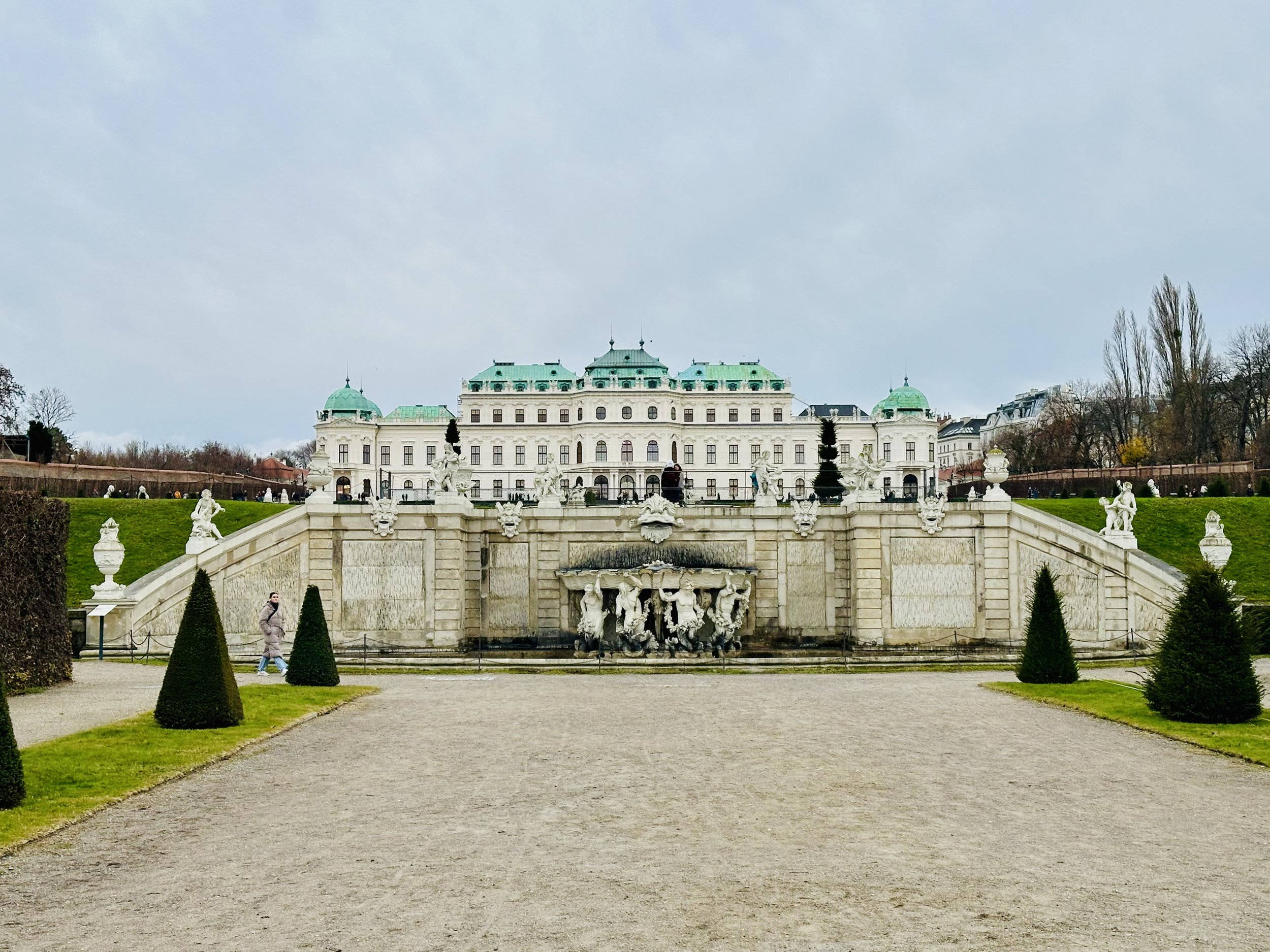
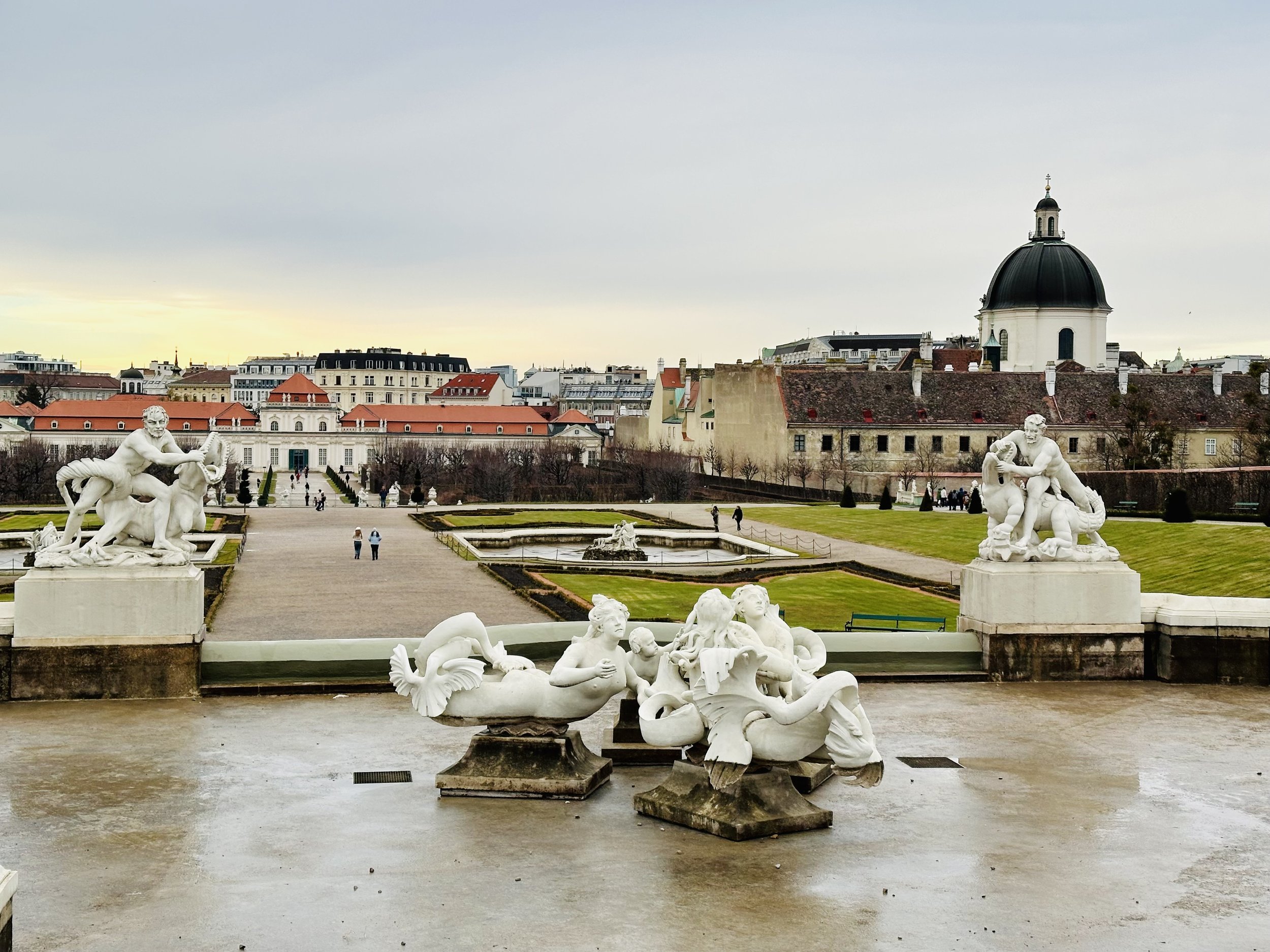
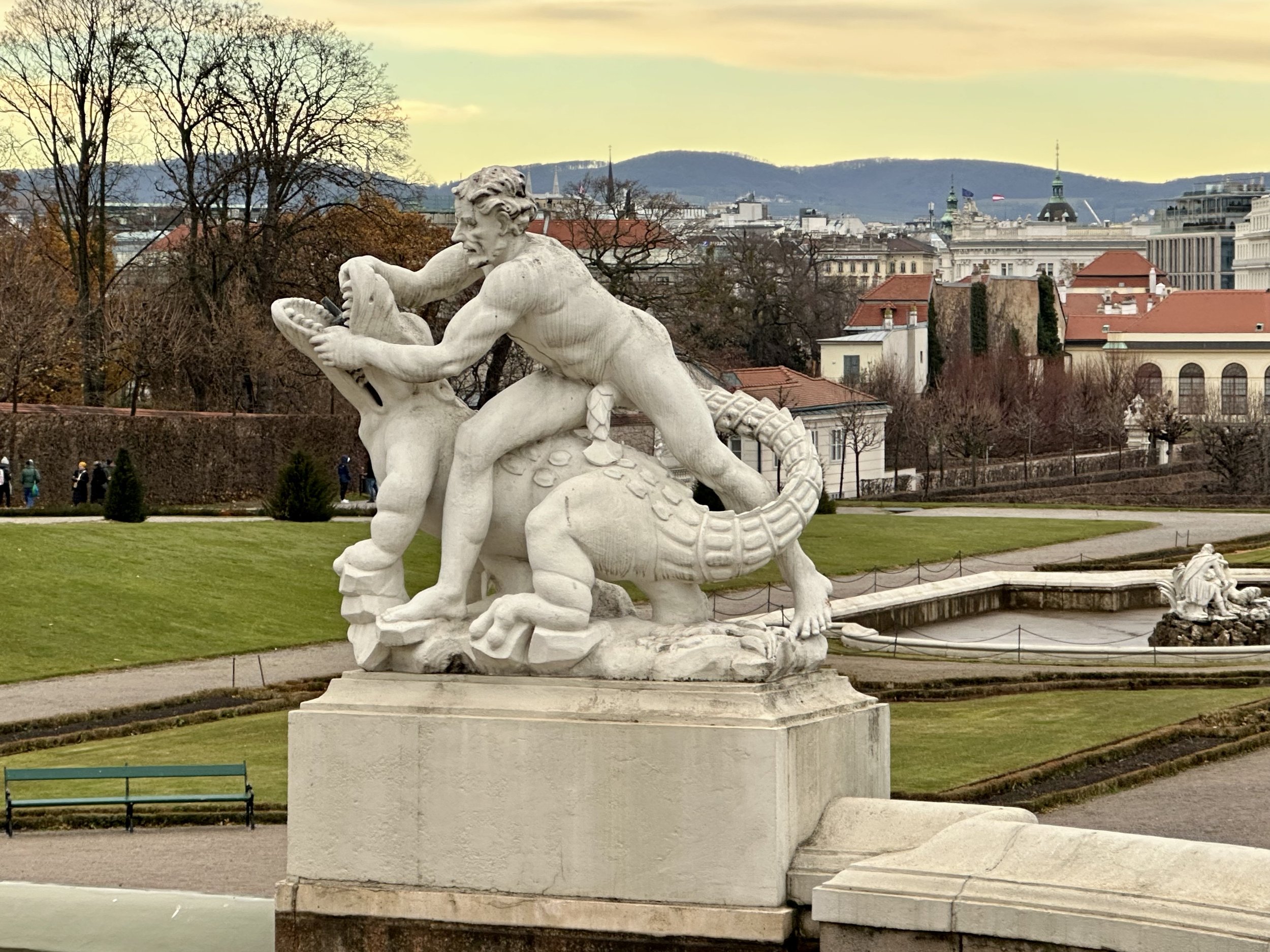
We visited the Upper Belvedere, which exhibits selections from the museum’s permanent collection. We were expecting to visit an art museum, and discovered that it involved walking through a magnificent palace! The ornate vaulted ceiling of the ground floor hall was held up by mighty Atlas figures. The Grand Staircase lived up to its name.
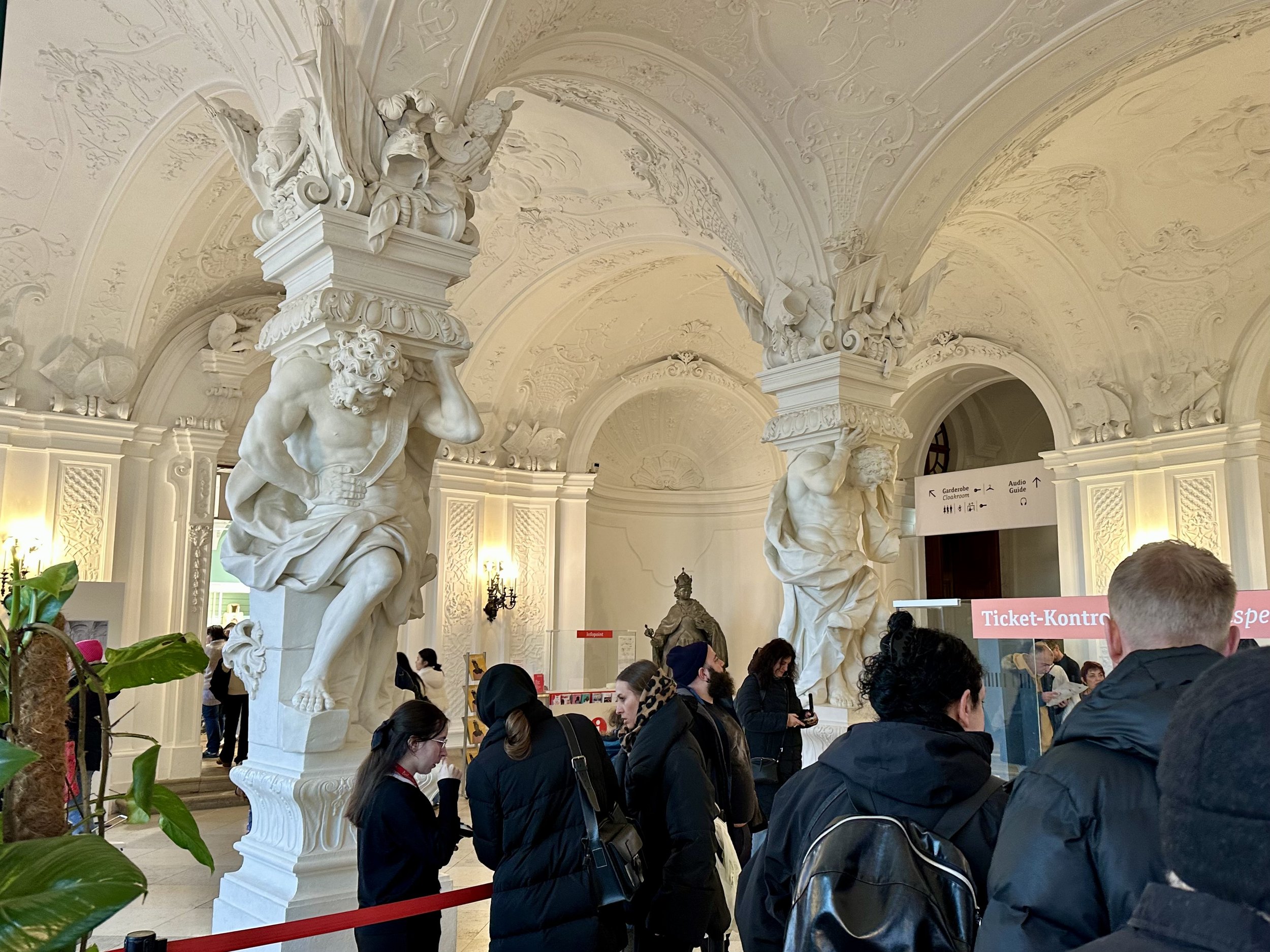

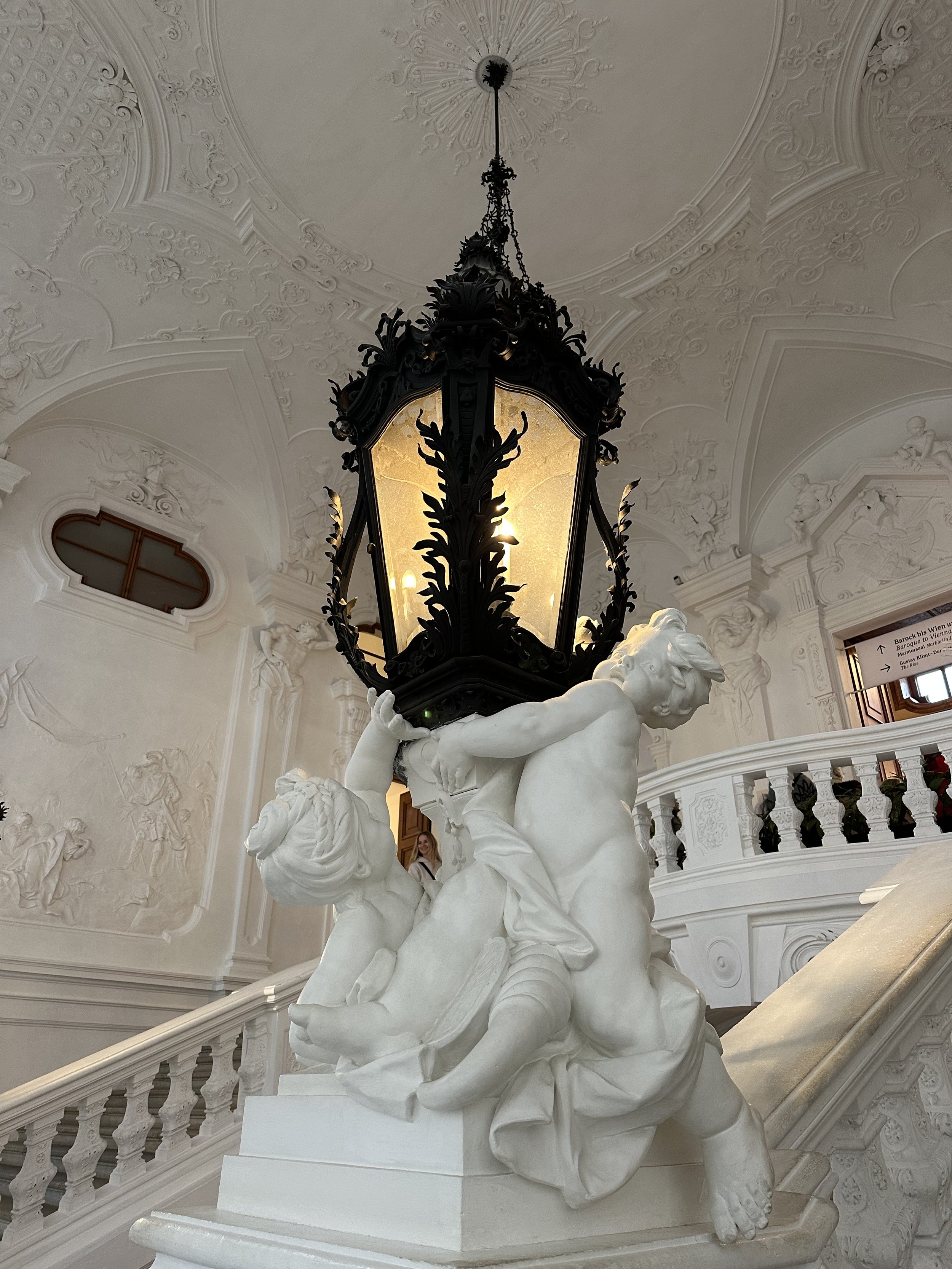
In the galleries, we saw portraiture by Austrian expressionist painters in the early 19th century. They were mainly self-portraits or commissioned portraits for prominent families. I was drawn to the work of Richard Gerstl, who created about eighty paintings before dying young at age 25, and Egon Schiele, who depicted a five-year-old boy with old hands and an intense gaze. These were juxtaposed with striking portraits by contemporary artist Amoako Boafo, a Ghanaian who studied in Vienna.
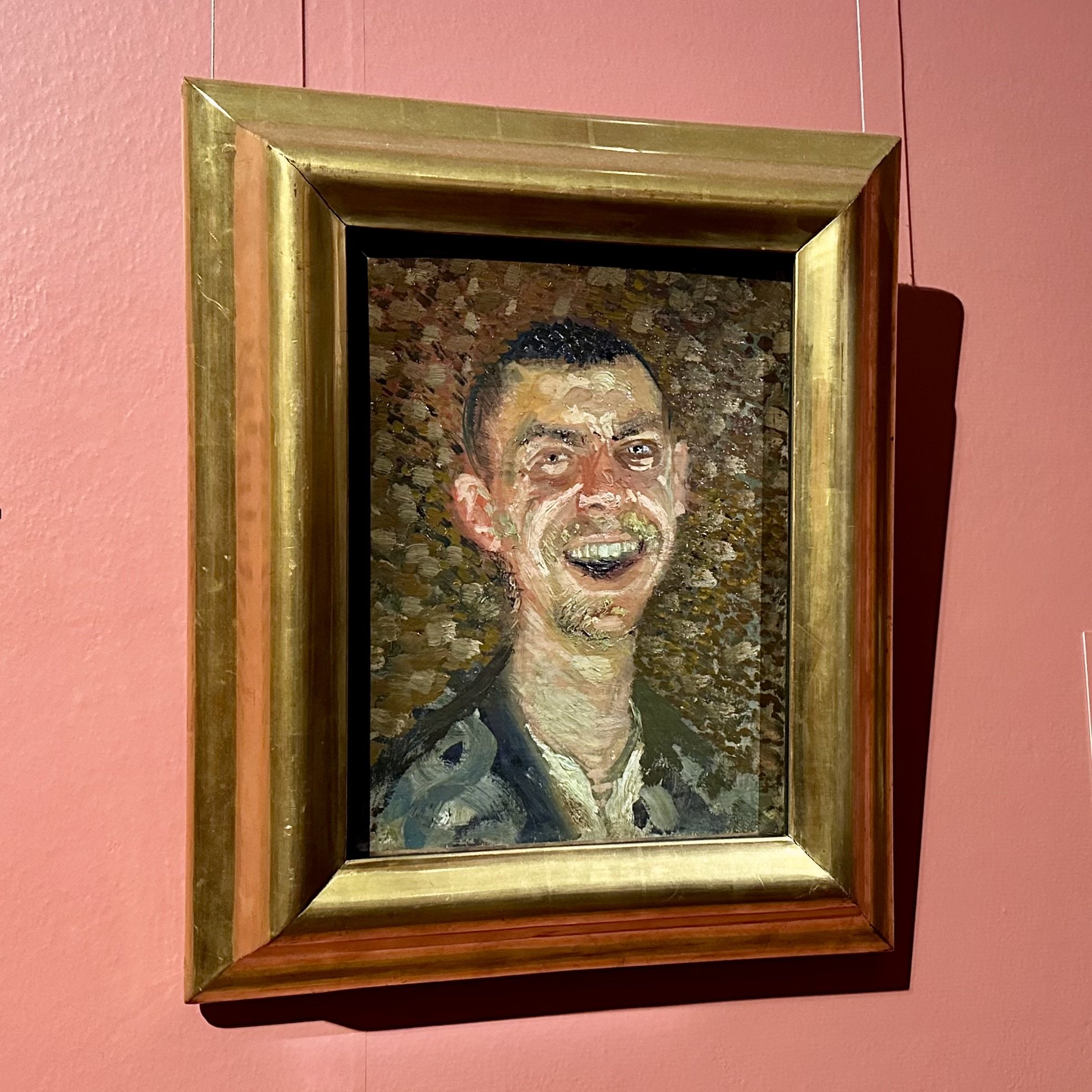
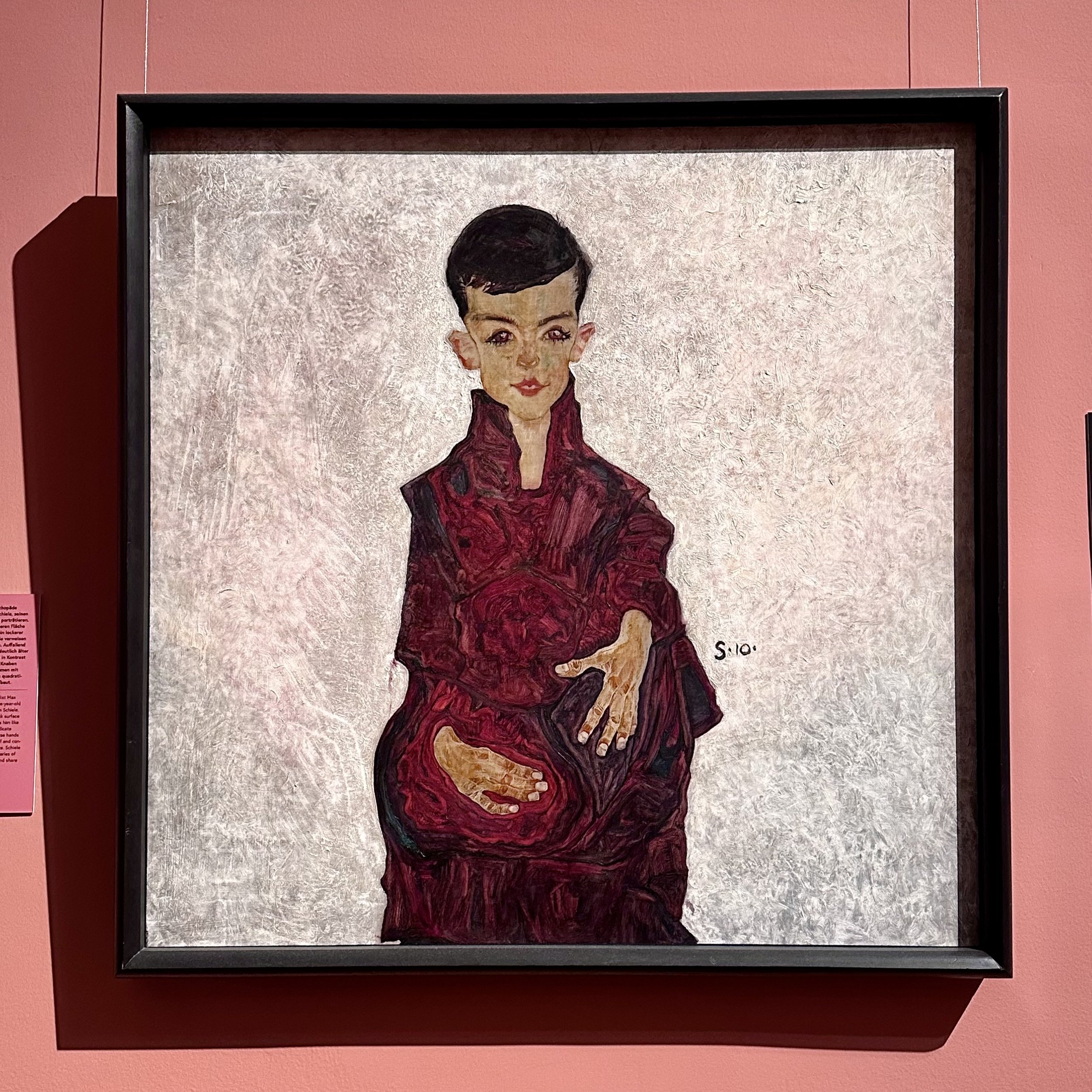
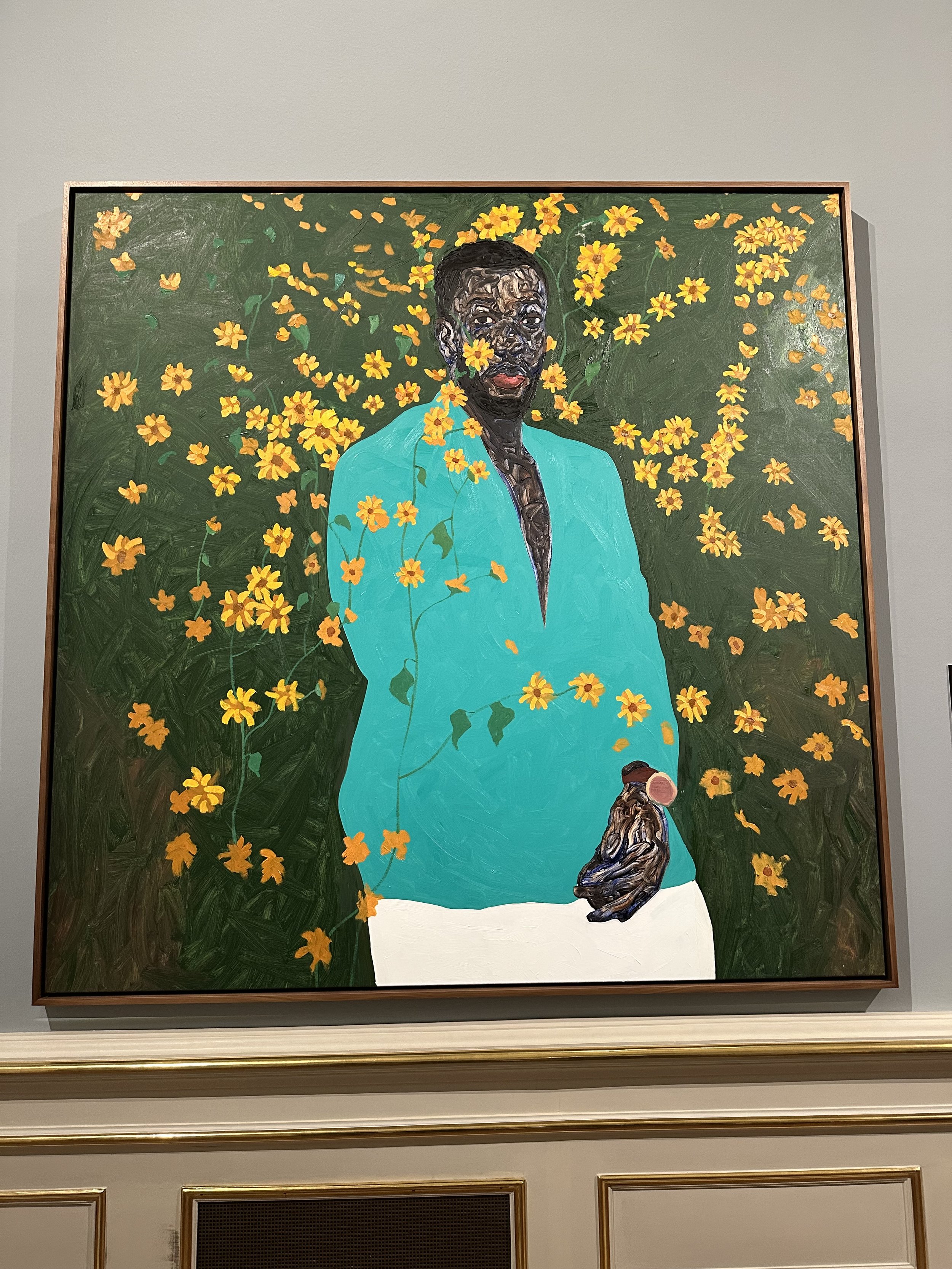
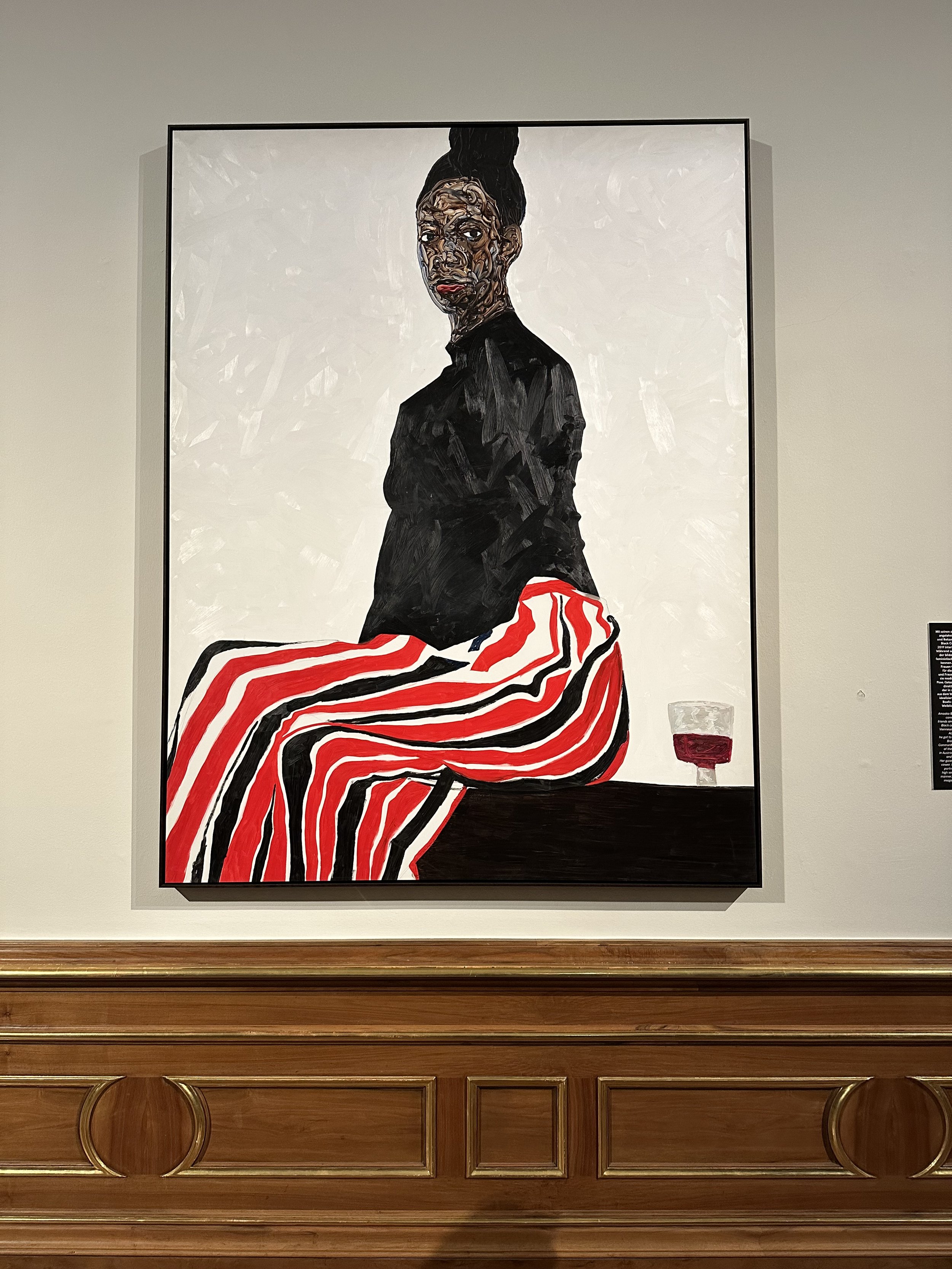
The main reason I wanted to visit the Belvedere was to see the collection of works by renowned Austrian painter Gustav Klimt. I was already familiar with Klimt’s more famous works, such as The Kiss, but the Belvedere had much more. I saw his landscapes for the first time, in which leaves and flowers became flat, decorative patterns, with tiny, almost pointillist brushstrokes and precise details. In his portraits, those exquisite patterns were like mosaics, enhancing the ethereal beauty of the faces. Gorgeous! Viewed up close, The Kiss, with not only gold leaf, but also silver and platinum, was remarkable. And Steve and I both loved the portrait of Judith, triumphantly holding the severed head of Holofernes. Klimt is now one of my favorite artists.
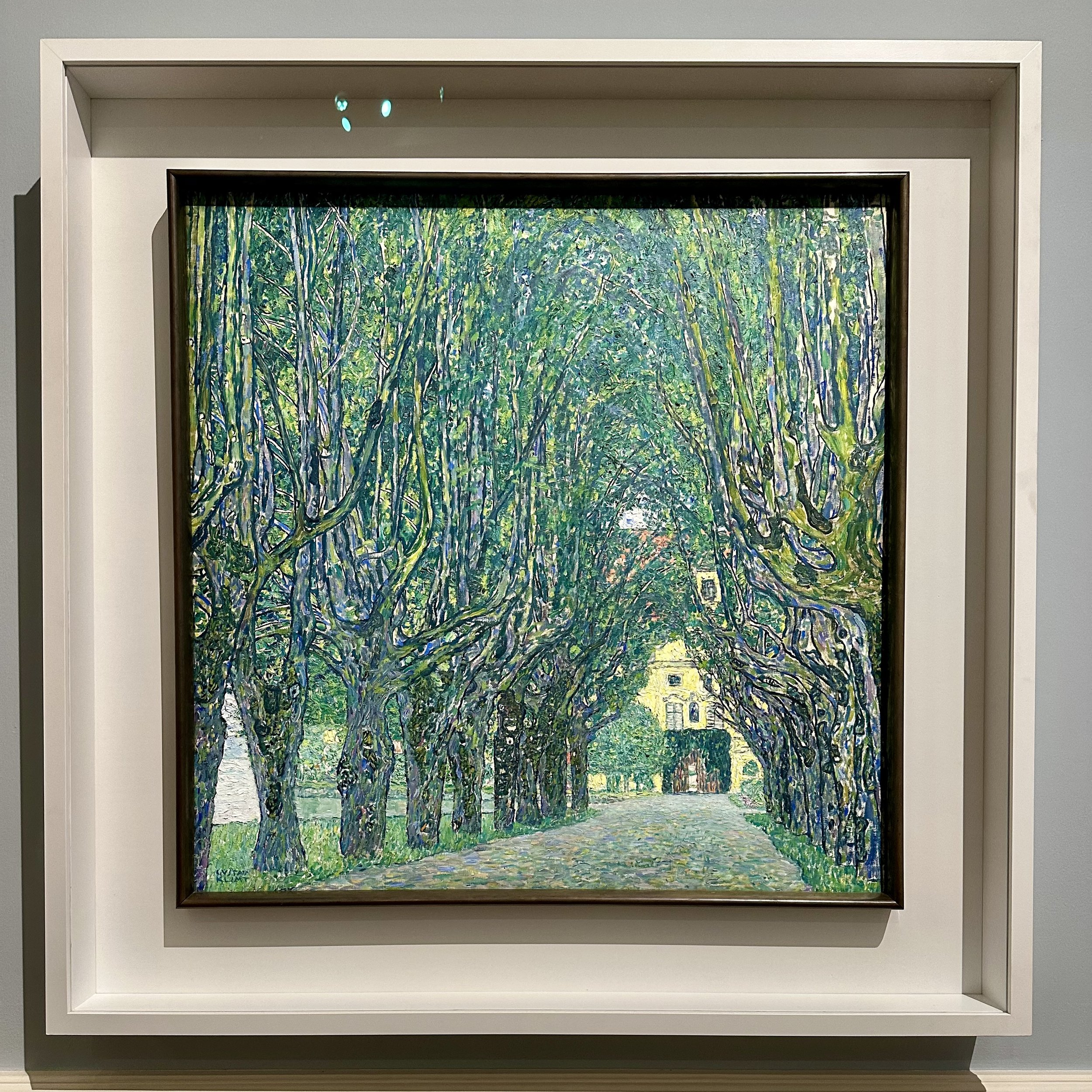
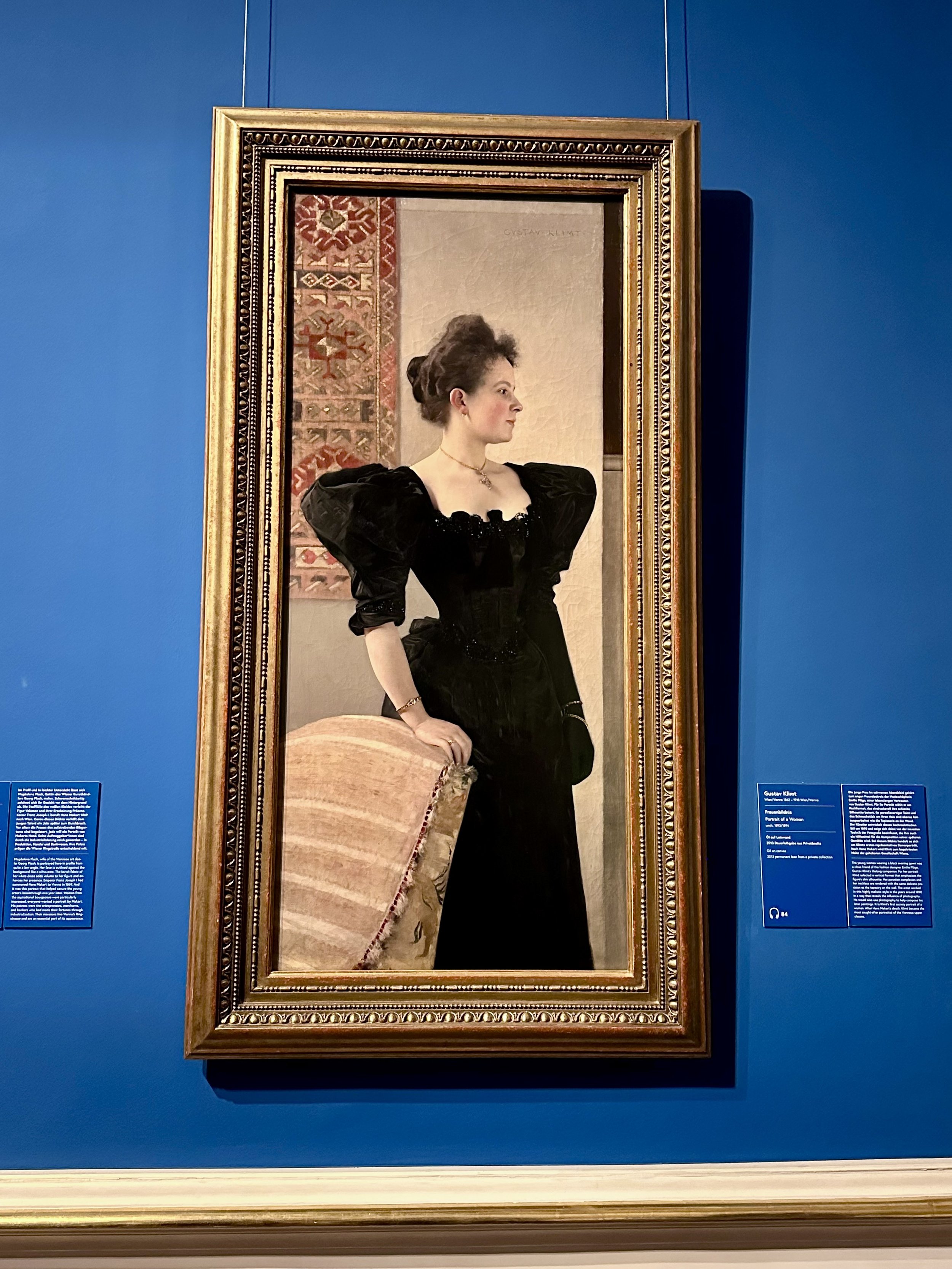
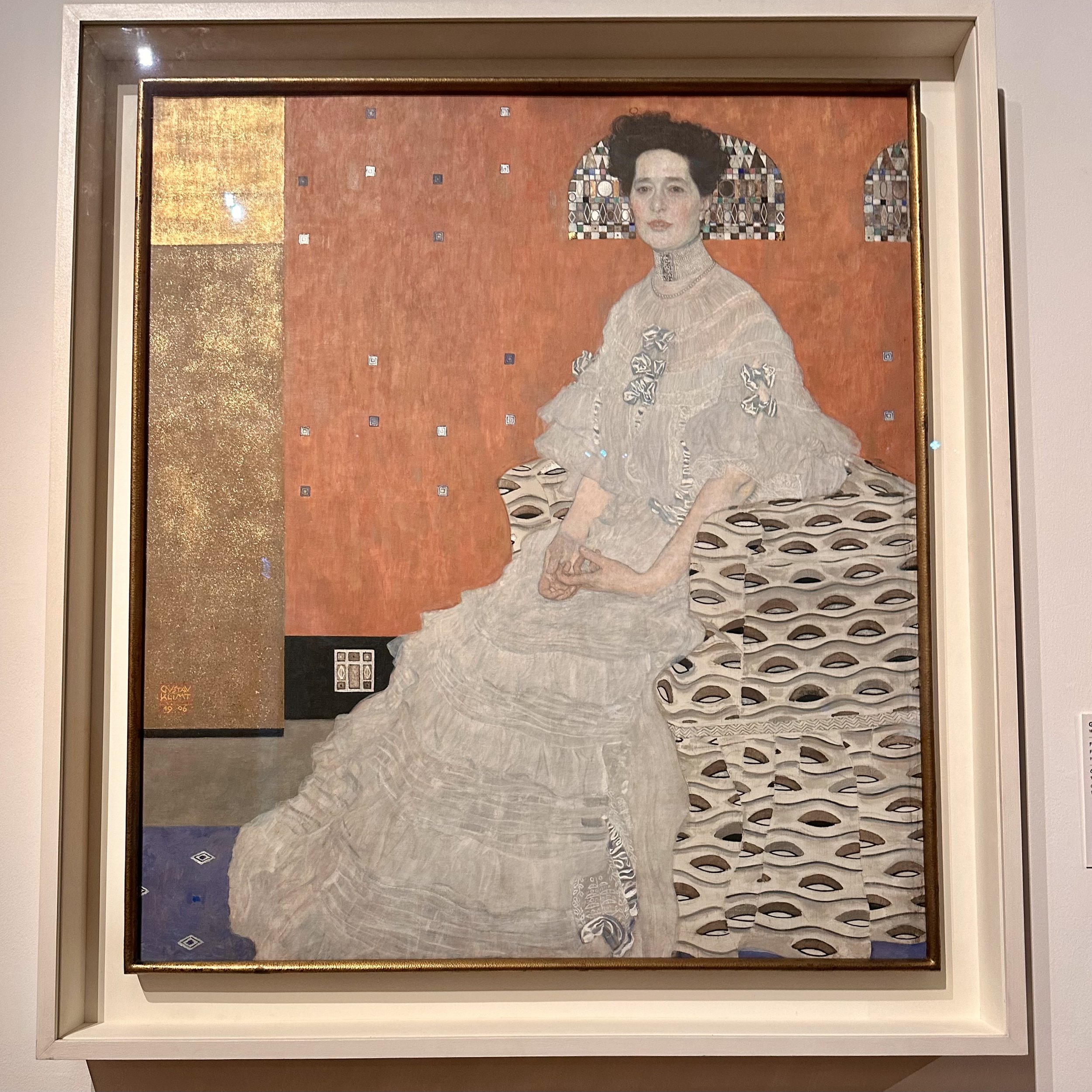
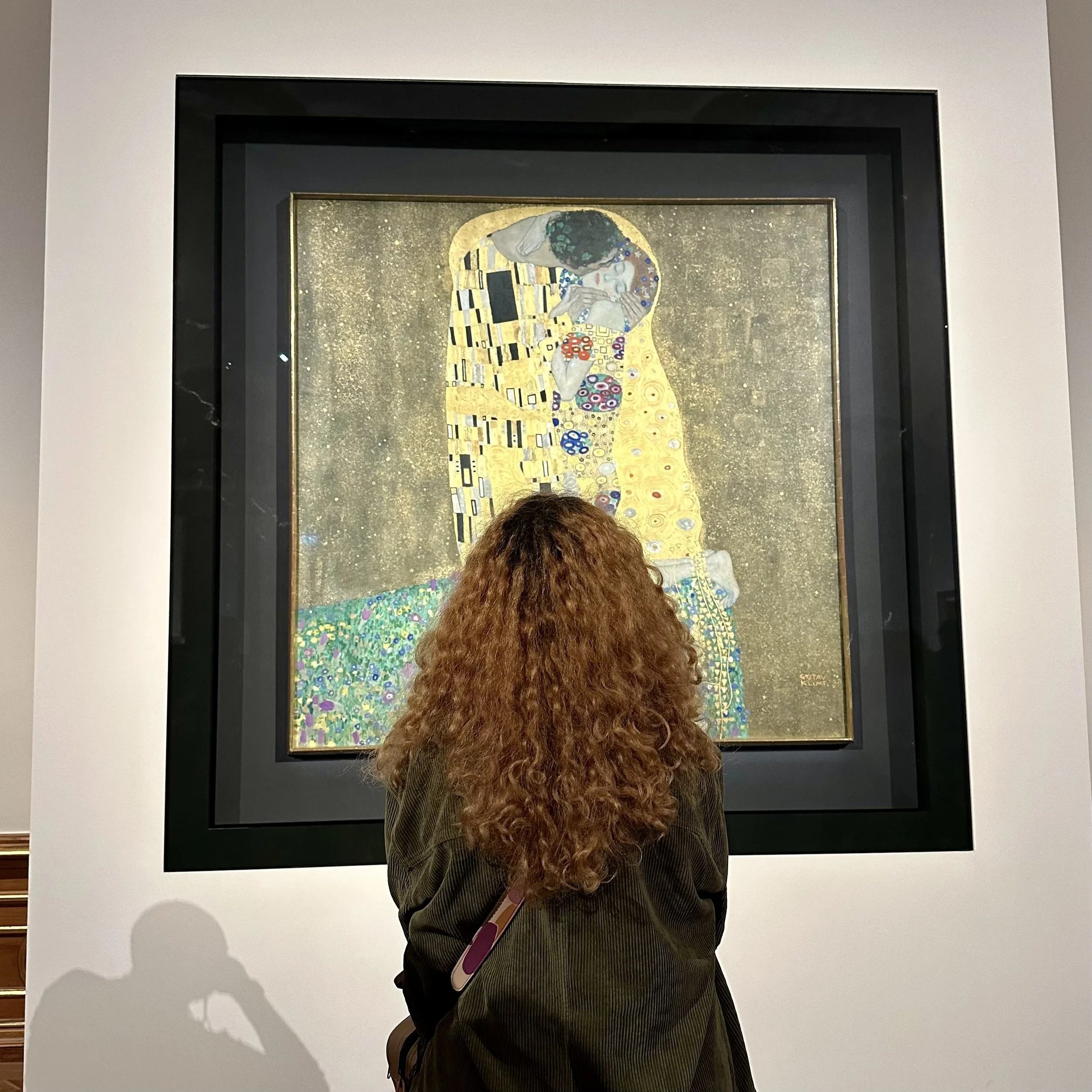
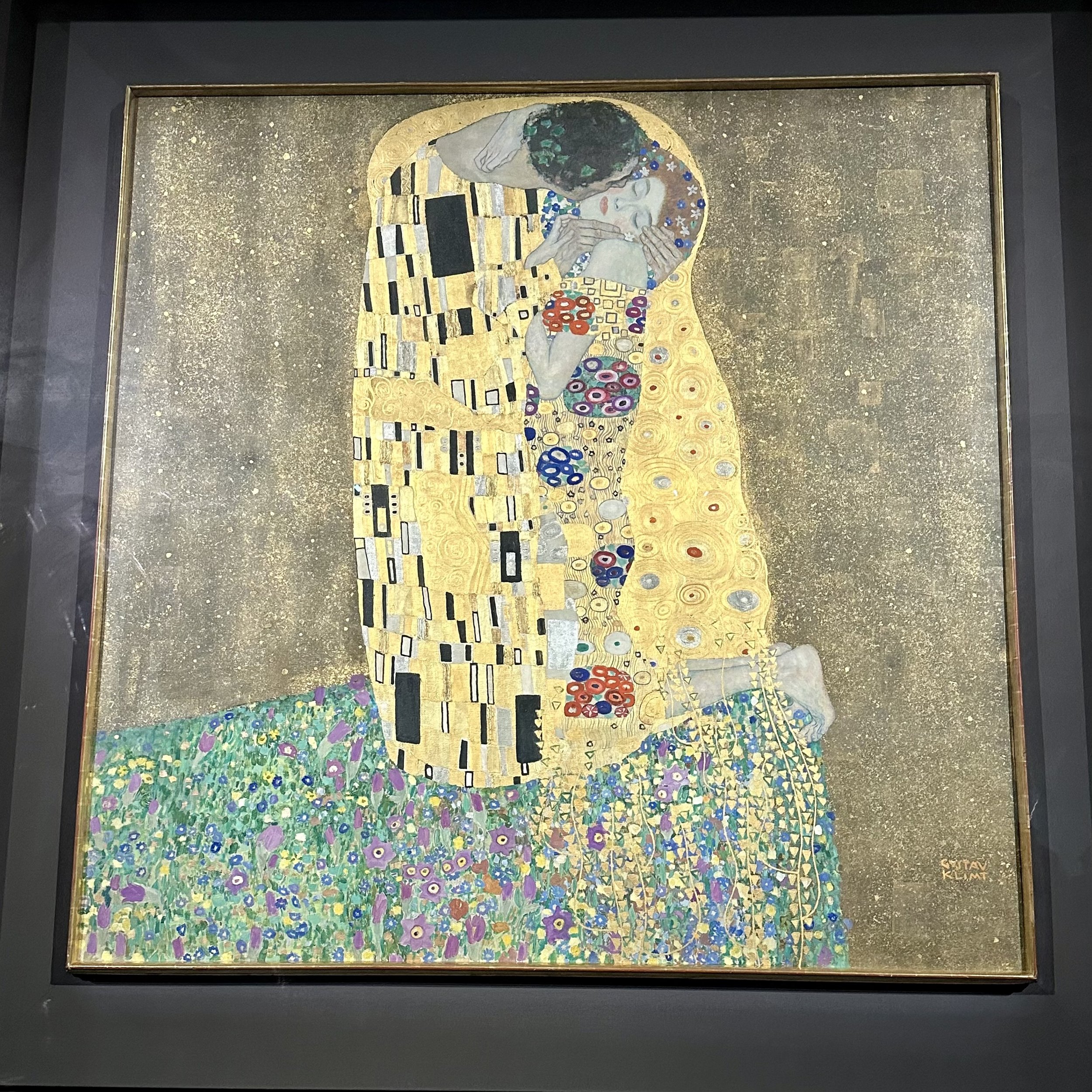
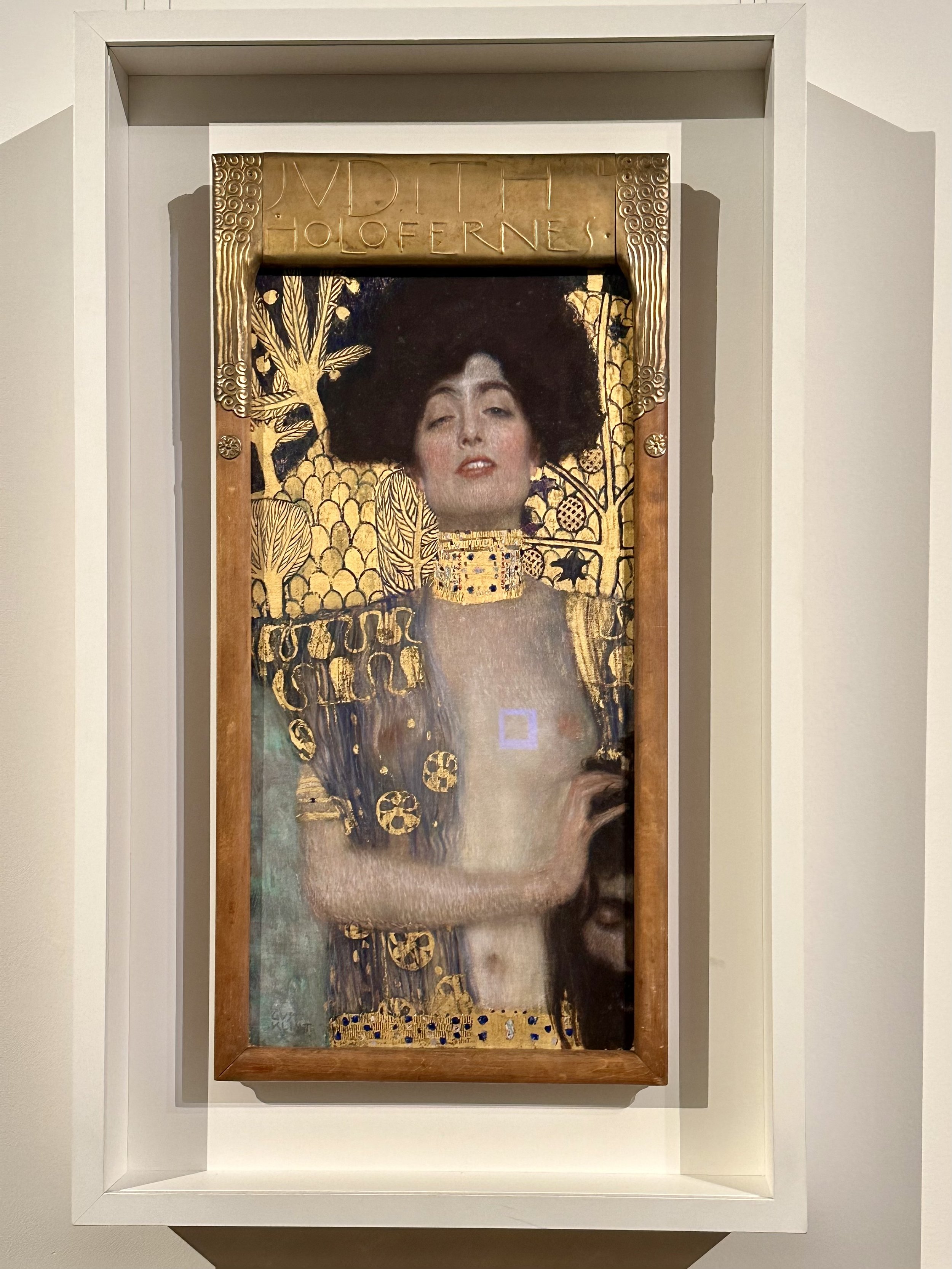
There was much more to see at the Belvedere, but after Klimt, my favorite was The Character Heads, a collection of marble and bronze portrait busts by German-Austrian sculptor Franz Xaver Messerschmidt. They were created between 1771 and 1783, but they seemed timeless to me. Reportedly, the artist pinched himself in the ribs in front of a mirror, and recorded his facial expressions as a scientific exercise. Many believe he suffered from paranoia and hallucinations. Regardless of how or why they were created, the lifelike grins and grimaces were entertaining and fascinating.





